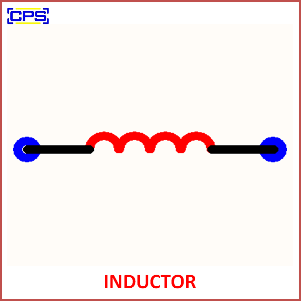An inductor is a passive electronic component that stores energy in its magnetic field when an electric current passes through it. It consists of a coil of wire wound around a core (which may or may not be magnetic) and opposes changes in the current flowing through it.

Key Features of an Inductor:
- Inductance:
- The primary characteristic of an inductor is its inductance, measured in henries (H). Inductance is a measure of the inductor’s ability to resist changes in current.
- Magnetic Field:
- When current flows through the coil, a magnetic field is generated around the coil. This magnetic field stores energy.
- Opposition to Current Change:
- Inductors resist changes in current by generating a voltage that opposes the change (based on Lenz’s Law). This makes inductors useful in filtering, energy storage, and regulation applications.
- Time Response:
- Inductors can cause a delay in the change of current, making them important in filtering applications for smooth current flow.
Types of Inductors:
- Air-Core Inductor: Uses air as the core material (no magnetic material inside the coil).
- Iron-Core Inductor: Uses a magnetic core (like iron) to enhance the inductance.
- Toroidal Inductor: The coil is wound around a ring-shaped core to reduce energy loss and electromagnetic interference.
Applications:
- Energy Storage: Inductors store energy in their magnetic fields, which is then released when the current decreases.
- Filters: Used in power supplies, radios, and signal processing to filter out unwanted frequencies.
- Chokes: Inductors that block or limit high-frequency noise in circuits.
- Transformers: In power systems to convert voltage levels.
Inductors are essential components in electronics, especially in applications where energy storage, filtering, and voltage regulation are needed.
